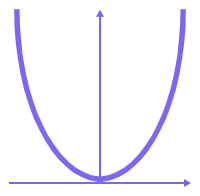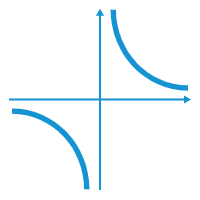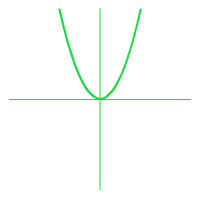Curious about what is function notation? Explore its purpose and significance in mathematics. Learn how function notation represents mathematical relationships effectively.
Introduction to Function Notation: Examples and Usage
Function notation is a fundamental concept in mathematics that allows us to describe and analyze the relationships between variables in a precise and concise manner. It provides a powerful framework for expressing mathematical functions and investigating their properties. In this comprehensive guide, we will explore the intricacies of function notation, its significance in mathematical analysis, and how it is used to simplify complex mathematical expressions. By the end of this article, you will have a deep understanding of function notation and be equipped to apply it confidently in various mathematical contexts.

Check Out Our Online Calculators and Tools
Understanding Function Notation
Definition and Purpose
Function notation is a way of representing mathematical functions, which are relationships between input values (known as the domain) and output values (known as the range).A function is a mathematical concept that links every input value to a distinct output value through a defined rule or relationship. It provides a systematic way to describe how the elements of the domain are transformed into corresponding elements of the range. Function notation enables us to express these relationships succinctly, making it easier to work with and analyze functions.
Components of Function Notation
Input and Output Variables
In function notation, the input variable is typically denoted by “x” and represents the values from the domain that are fed into the function. The output variable is represented by “y” or “f(x)” and represents the resulting values obtained from applying the function to the input values.
Function Rule
The function rule describes the specific operations or calculations performed on the input values to obtain the corresponding output values. It can be expressed using algebraic expressions, formulas, or graphical representations.
Representation of Functions
Mapping Diagrams
A mapping diagram is a visual representation of a function that illustrates how each element from the domain is mapped to its corresponding element in the range. It consists of two columns: one for the input values and another for the output values.
Tables of Values
Tables of values provide a tabular representation of a function, listing the input values and their corresponding output values in an organized format. This allows for easy reference and analysis of the function’s behavior.
Graphs
Graphs visually represent functions by plotting the input-output pairs on a coordinate plane. The input values are plotted on the x-axis, while the corresponding output values are plotted on the y-axis. Graphs provide valuable insights into the behavior of functions, such as their increasing or decreasing nature, symmetry, and intercepts.
Syntax and Notation
Function Notation Symbols
The f(x) Notation
The most commonly used notation for functions is the “f(x)” notation, where “f” represents the function and “x” is the input variable. The function name is followed by parentheses, inside of which the input value is placed. The output value is denoted as “f(x)” or “y.”
Other Common Notations
Function notation can also be represented using alternative symbols or names, depending on the context or personal preference. For instance, functions can be denoted by symbols like “g(x)” or “h(x)” to distinguish and represent various mathematical relationships.

Try Out Divided by What Equals Calculator
Using Parentheses and Subscripts
Importance of Parentheses
Parentheses are essential in function notation as they indicate that the value inside the parentheses is the input value for the function. Without parentheses, the notation may be ambiguous or misleading.
Subscript Notation
In some cases, subscripts are used to differentiate between multiple functions or to indicate variations of a function. For example, “f₁(x)” and “f₂(x)” represent two distinct functions.
Domain and Range Notation
Describing the Domain
The domain of a function encompasses the complete range of valid input values that can be used to evaluate the function and obtain meaningful output results. It can be represented using interval notation, inequalities, or set notation. For example, if a function is defined for all real numbers except x ≤ 0, we can express the domain as (0, ∞) or {x | x > 0}.
Expressing the Range
The range of a function refers to the set of all possible output values obtained by applying the function to the elements of the domain. Similar to the domain, the range can be described using interval notation, inequalities, or set notation. For instance, if a function outputs all real numbers greater than or equal to 2, we can represent the range as [2, ∞) or {y | y ≥ 2}.
Applying Function Notation
Evaluating Functions
To evaluate a function at a specific input value, we substitute that value into the function and simplify the expression to obtain the corresponding output value. For example, if we have the function f(x) = 3x + 2 and we want to find f(4), we replace x with 4 and calculate f(4) = 3(4) + 2 = 14.
Function Composition
Function composition involves combining two or more functions to create a new function. This is achieved by using the output of one function as the input of another. For instance, if we have functions f(x) = 2x and g(x) = x + 3, we can compose them as h(x) = f(g(x)), resulting in h(x) = 2(x + 3) = 2x + 6.
Solving Equations with Function Notation
Function notation is also useful in solving equations involving functions. We can set two functions equal to each other and find the values of x that satisfy the equation. For example, if f(x) = 2x + 3 and g(x) = x – 2, we can solve the equation f(x) = g(x) to find the value(s) of x that make the two functions equal.
Common Mistakes and Pitfalls
Misinterpreting Function Notation
One common mistake is misunderstanding the meaning of function notation symbols. It is crucial to recognize that “f(x)” represents the output value of the function when given the input value “x,” rather than a product of “f” and “x” or a multiplication operation.
Forgetting Parentheses
Leaving out parentheses in function notation can lead to confusion or errors. It is essential to include parentheses to clearly indicate the input value for the function.
Confusing Domains and Ranges
Mixing up the domain and range notation can cause misunderstandings. Remember that the domain refers to the input values, while the range represents the output values.

Check Out Various Math Calculators
Summary
Function notation is a vital tool for expressing and analyzing mathematical functions. It allows us to describe relationships between variables concisely and provides a structured framework for understanding functions’ properties. By understanding the components of function notation, its syntax, and its application in various contexts, you can effectively work with functions and solve mathematical problems with precision. Practice using function notation, explore its applications in different branches of mathematics, and deepen your understanding of this fundamental concept. With a solid grasp of function notation, you will be well-equipped to tackle more complex mathematical concepts and continue your journey in mathematical analysis.
